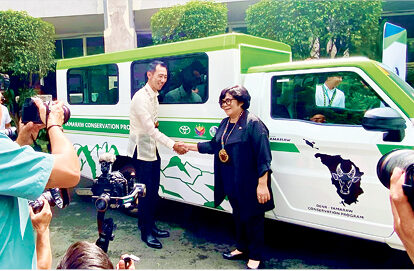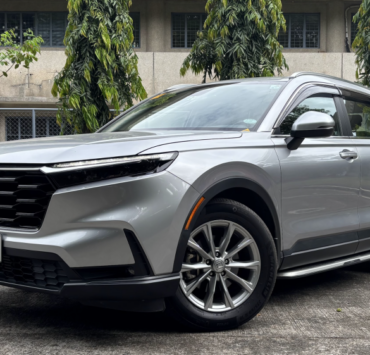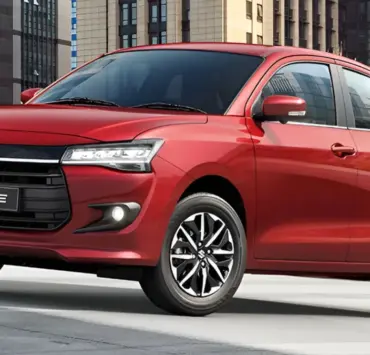Bantay Tamaraw rangers get their own Toyota Tamaraw

Mamburao, Occidental Mindoro—As I write this, I’m in the middle of the Verde Island Passage—the strait that separates mainland Luzon from the island of Mindoro—on a RoRo (roll on roll off) ferry with a team from Toyota Motor Philippines (TMP) and the Department of Environment and Natural Resources (DENR). From the Batangas Pier, it’s a 2-hour ferry to Abra de Ilog and the mountains of Iglit-Baco Natural Park.
Below deck is a Philippine-made Toyota Tamaraw Utility Van (long wheelbase variant), waiting for the ship to dock at Abra de Ilog before rolling out en route to the Carindan Station in Sta. Cruz, Occidental Mindoro, where the Bantay Tamaraw Rangers await to formally receive it, along with sets of mountaineering equipment and protective gear.
The rangers are volunteer indigenous people and community residents who have committed to protect the critically endangered Tamaraw (Bubalus mindorensis) and their known habitats in the mountains of Iglit-Baco Natural Park, which spans Occidental Mindoro and Oriental Mindoro. To date, DENR’s Tamaraw Conservation Program (TCP) office has 18 registered rangers.
Now, I get the chance to “escort” the Toyota Tamaraw myself, from its makers to its eventual roaming grounds.
The ceremonial turnover happened last Monday at the DENR Central Office in Quezon City. TMP Foundation (TMPF), TMP’s social and humanitarian arm, turned over a brand-new locally produced Tamaraw vehicle and Bantay Tamaraw Kits in support of the TCP.
In his speech during the turnover, TMP President Masando Hashimoto addressed the Bantay Tamaraw Rangers: “We salute you for risking yourself on the ground to protect our Tamaraws. Now, it is your turn to be protected too–from the harsh mountain conditions and various dangers of trekking and camping for weeks in the wilds. Today, please also accept the 30 sets of Bantay Tamaraw Kits complete with gear from head to toe, camping tools and devices.”
DENR Secretary Maria Antonia Yulo-Loyzaga said: “Today, we mark another milestone in our collective mission to conserve one of the Philippines’ most iconic and endangered species—the Tamaraw. This turnover of the Next Generation Tamaraw vehicle and Bantay Tamaraw kits represents more than just the handover of essential equipment and a vehicle; it is a reaffirmation of our commitment to protecting and preserving our country’s biodiversity with like-minded international partners.

Yulo-Loyzaga gave an update on the status of the Tamaraw. “The traditional Intensive Concentration Count (ICC) conducted from March 25 to April 1, 2025, at the Mts. Iglit-Baco Natural Park has provided an initial estimate in this one site of 351 Tamaraws. This count serves as an important baseline for this site for assessing the current population of this critically endangered species.
She added: “Ongoing efforts include the Double Observer Point Count and the Double Observer Distance Sampling of dung, which are being conducted in the protected area where the majority of the Tamaraw population is located. These methods aim to refine population estimates and monitor trends in Tamaraw numbers more accurately.”
In addition to Mts. Iglit-Baco Natural Park, other confirmed populations of Tamaraws have been observed in these areas:
Aruyan-Malati Tamaraw Reservation in Sablayan, Occidental Mindoro
Mt. Calavite Wildlife Sanctuary in Paluan, Occidental Mindoro
Upper Amnay Tamaraw Habitat spanning Occidental and Oriental Mindoro
Despite these positive signs of population distribution, the Tamaraw remains critically endangered, especially considering that a few decades ago, up to 10,000 Tamaraws were sighted in the wild. Ongoing threats such as poaching, habitat loss, and the impact of climate change continue to jeopardize the species’ survival. These challenges underscore the urgent need not just for continued conservation efforts but to actually build a sustainable, thriving population of the Tamaraw. Thus, breeding would be the next step in this important work.
Hashimoto explained: “You might be thinking, why is Toyota supporting such an initiative? Under our global Toyota Environmental Challenge 2050, we want to establish a society in harmony with nature. This is going ‘Beyond Zero’ emissions. Alongside our reforestation, afforestation, and marine life conservation efforts with the DENR, biodiversity conservation is another way to influence more people to make a difference for the planet. We are lucky to co-exist with both the animal and vehicle at the same time. We hope our future generations, like my own kids and future grandkids, will do too.”
These aren’t mere words from Hashimoto. Months ago, he went to Mindoro himself via RoRo. During his two-day stay, he went on a 100-km bike ride with his friends. “I was blown away by the natural beauty of the Tamaraw’s hometown. I said to myself, we need to protect nature and its wildlife.
“And today is the time to get into real action. I wholeheartedly support you for being the real heroes to our Tamaraws,” Hashimoto declared.
On top of in-kind donations, TMPF is also committed to provide a P3-million conservation fund to support key program initiatives, including Tamaraw habitat monitoring and research, support programs for barangay and indigenous people volunteers, equipping the Tamaraw Research and Conservation Center, and various communication, education, and public awareness activities.
Founded 35 years ago, TMPF focuses on four core pillars of health, education, environment, and community service.
I wrote last year, when the Next-Gen Toyota Tamaraw was about to be officially launched, that I hope the re-entry of a legend would save another from oblivion. That hope is becoming reality with the partnership between TMP and DENR, and the handover of this Toyota Tamaraw. This ship is sailing, indeed, and I now hope this launches a thousand more.


















